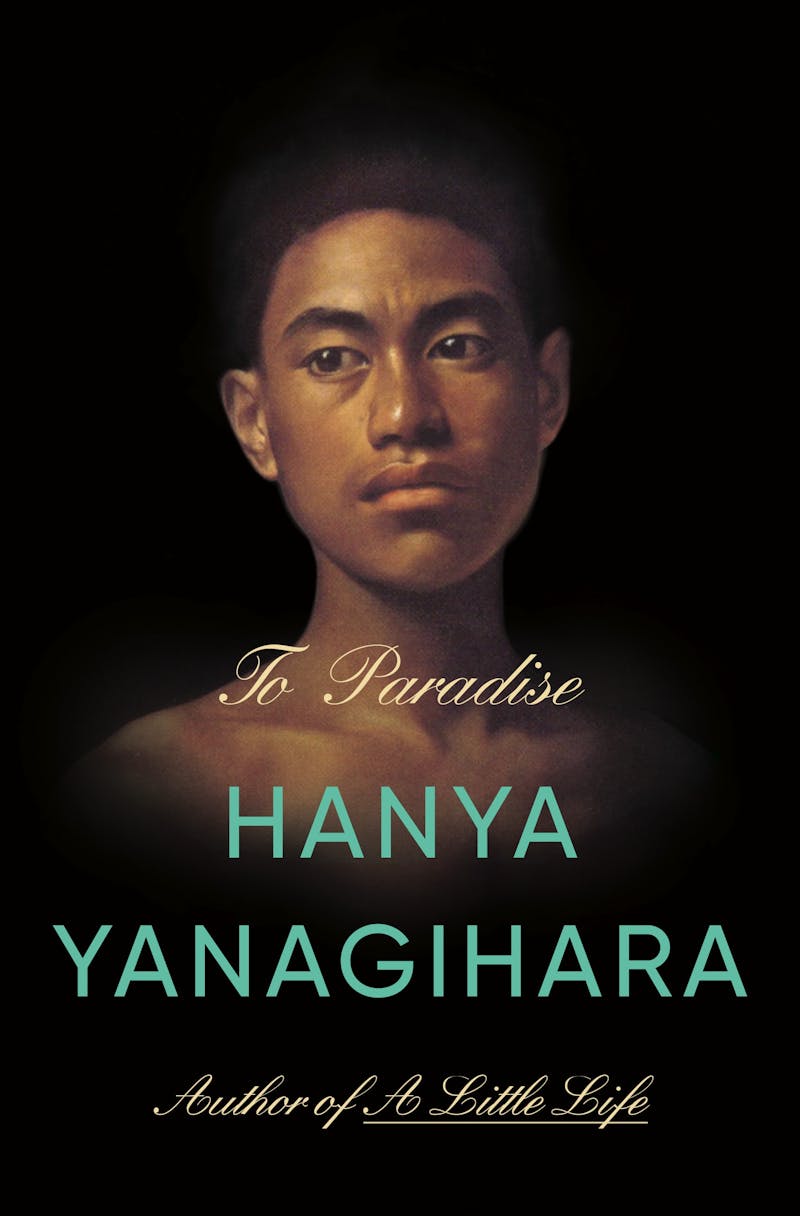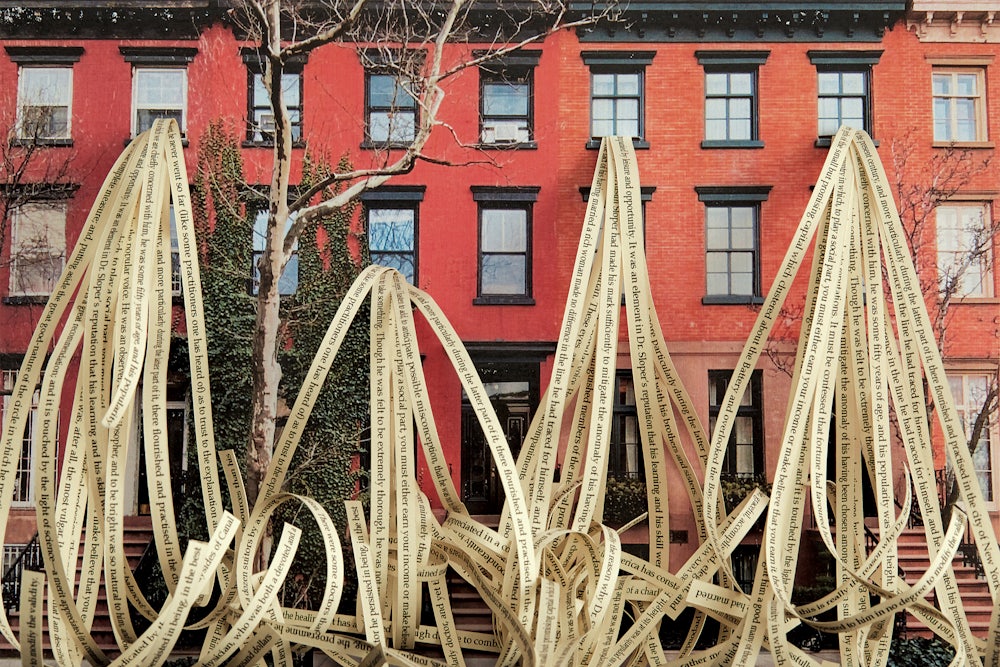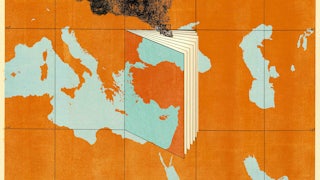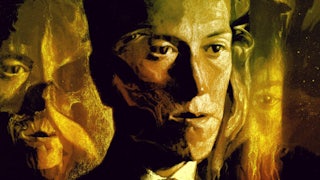The maximalist novel, switching in its long narrative journey between different time periods or genres—or sometimes both—has over the years become something of a genre in itself. Even as a significant slice of literary fiction turns ever more slender and novella-like, too weary in its ennui to sketch out more than thoughts and emotions, a countercurrent exists in massive novels that purport to capture many things. Unlike earlier books by writers like Thomas Pynchon and Don DeLillo, soldering their paranoid but plausible links across vast swaths of time and space (or, as in the case of the woefully underrecognized Karen Tei Yamashita, connecting, in novels like Tropic of Orange and I Hotel, multiple sites of resistance and solidarity), the newer iterations tend to be fast-paced, slick, and shallow.

The critic Maggie Doherty has written about the way many prize-winning contemporary writers produce work that has just enough formal excitement “to catch the eye of cultural gatekeepers but not so much that it renders a work unmarketable.” These writers increasingly “forge aesthetic compromise and favor political consensus,” she notes. The British novelist David Mitchell is the exemplar of this kind of accessibly experimental maximalist fiction, merging—as in his wildly successful Cloud Atlas—formal playfulness derived from Italo Calvino with mild critiques of nineteenth-century colonialism, racism, and climate collapse.
The dominance of this approach in itself is no reason to be suspicious of Hanya Yanagihara’s endeavor to write a maximalist novel of her own. Just because mainstream publishing favors shallow, airbrushed explorations of serious subjects does not mean that the issues themselves are not of significance. At over 700 pages, with three sections ranging from the nineteenth century to the 1990s to 2094, To Paradise purports to take in queer culture, the colonization of Hawaii, and a global unraveling caused by the conjunction of pandemics, authoritarian governments, and climate collapse. Its promise is to show how such upheavals inform individual lives and how “three different versions of the American experiment … and the elusive promise of utopia,” as the press release puts it, inflect its characters’ search for personal happiness. The future we are living in is undoubtedly haunted by the past, and it is perfectly reasonable for a novel to set out to explore such issues, and in an inventive form that involves more than marketable glitz.
To Paradise is not Yanagihara’s first venture into power relations among individuals and social groups. Yanagihara, who grew up mostly in Hawaii of Asian American parents and is currently the editor in chief of the New York Times style magazine T, has drawn on aspects of her childhood as well as her metropolitan adult life in her earlier fiction. Her first novel, The People in the Trees (2013), is set on a Pacific island where an American researcher appears to have discovered a forest dweller group that has achieved immortality. A Little Life (2015), her second novel, was a hit both critically and commercially. An account of the friendship between four young men in New York, it was widely acclaimed as the great gay novel of our times and was a finalist for the Booker Prize and the National Book Award.
The framing of the new novel is far more expansive than those earlier works, combining something of the societal sweep of the first book with the pronounced length of her second. Yet Yanagihara brings to her broad themes a narrow social lens, which never widens sufficiently or with enough depth to make the vast scale of the novel convincing. The book progresses, instead, through increasingly pedestrian writing shoehorned into a chaotic structure that suggests indifference to form, raising some troubling questions along the way: Why has Yanagihara written a novel that announces such large questions and over such enormous length while showing little interest or ability to deliver on them? And why has the book been published in this state?
It begins promisingly enough. A slim, 170-page section titled “Washington Square” introduces us to an alternative, late-nineteenth-century New York. Its central character, David Bingham, is the nervous, slightly depressed, 28-year-old scion of the most powerful banking family in the city. He is trying to choose between two very different kinds of love interest: There’s the possibility of an arranged marriage to the dutiful but middle-aged Charles, versus a life with the feckless, possibly criminal, but young and rather attractive Edward. This is a nineteenth-century New York where same-sex marriage is legal, but arranged marriages among the upper classes are still common. The city exists on a continent where six separate political entities occupy the territory we have to come to know as the United States. New York is part of “The Free States,” the most progressive of these units, while “The United Colonies” to the south is particularly conservative, its brutal repression turning its Black and queer residents into fugitives who must cross the borders at great risk to seek a better life up north.
One of these counterfactuals works better than the other. Yanagihara’s writing about David’s romantic dilemma is elegant and controlled, largely focused on his state of mind as he weighs his future. “Here was New York, and everything he knew,” David thinks as he tries to decide whether to leave for the west with Edward. “There, with Edward, was someplace else, someplace he had never before been but, he could recognize, he had been searching for his entire life…. He would never have found it with Charles. Was this not the point of life, the reason his ancestors had established this country at all? So he might be allowed to feel the way he did, so that he might entitle himself to happiness?” This is the first appearance of the central question raised by the novel, or so it seems: Can the quest for a paradise built out of the trifecta of life, liberty, and the pursuit of happiness be successful, or will it always lead the protagonists astray?
The world beyond David’s social circle, however, is too vague to give this question sufficient resonance. The political makeup of the continent is never entirely clear, nor the reasons why it takes this particular shape or why Yanagihara has bothered with this alternative history backdrop. Despite the novel’s references to the “ancestors” who “had established this country,” the book barely touches on settler colonialism and reduces slavery to a passing reference to “escaping Negroes.” This section of the novel remains resolutely focused on its upper-class WASP characters, its Binghams and Foxleys and Cookes. The only political certainty in it is the broad existence of a north-south dynamic—the north progressive, the south regressive—and this feels less like a counterfactual experiment in motion than the lazy replication of contemporary New York self-regard.
It is possible that Yanagihara is merely setting the story in motion and leaving the big questions about multicultural utopias to be dealt with in the narratives that follow. The novel’s second section takes place 100 years later than “Washington Square.” From its title, “Lipo-Wao-Nahele,” and its central character—a young Hawaiian man in New York, also named David—we might expect it to engage with the long fallout of Hawaii’s brutal annexation by the United States.
This David lives in a mansion with his lover, another Charles, a senior partner at the firm where David is employed. The deliberate echoing of names—as well as the fact that this David lives in the same Washington Square house as the nineteenth-century David Bingham—suggests that Yanagihara is experimenting with how lives are repeated across vast swaths of time. It is a device to be found in writers as different as David Mitchell, Yukio Mishima, and Qurratulain Hyder, in novels that attempt to brush history together with ideas of reincarnation and repetition. Italo Calvino, inspired by the game-playing of the Oulipo movement, also repeats names in If on a Winter’s Night a Traveler to evoke the manner in which stories and genres echo and cross-fertilize each other.
Like much in this novel, however, this repetition increasingly appears half-hearted, going nowhere. Is this new combination of David and Charles a variation on the earlier story, or is it really the same story being repeated? The second David is reluctant to talk about his Hawaiian heritage, but regrets not doing so. On his very first date, Charles asks him what he is, to which he responds with a few sparse details. “Later, after he had moved in with Charles, he had looked back at that moment and had recognized that he could have redirected the course of their relationship; what if, instead of responding as he had, he had instead said something like: Oh, yes, I’m from one of the oldest families in Hawai’i. I’m descended from royalty. Everyone there knows who we are. If things had gone differently, I would have been king.” For all these second thoughts, the novel doesn’t spend more time on how differently things might have gone, with the result that this David appears none too different from the first one.
The parts of the novel that talk about Hawaii are left to David’s father, Wika, who in the middle stretch of this section delivers a monologue on his trajectory as a king without a kingdom. When Wika is in his late twenties, he is reluctantly sucked into the anti-colonial fantasy of a Hawaiian friend of his called Edward. Unlike Wika, who has a trust fund and a baby—David—from a brief encounter with a woman visiting from Minnesota, Edward is part of the growing countercultural turmoil of the 1960s and ’70s in Hawaii. Like the American Indian Movement or the Black Panthers, Indigenous Hawaiians are beginning to question the modernity that colonialism has brought them. (Edward, in fact, drags Wika to listen to a political speech given by a man called Bethesda, a Black Panther visiting from Oakland.) Wika seems mostly unconvinced. When he sees stories about the activists on the news, he portrays them as a confused, self-serving band of opportunists:
This was a group of native Hawaiians who, depending on which member you asked and on which day, were demanding either Hawai’i’s secession from the United States, or the restoration of the monarchy, or nation-within-a-nation status for native Hawaiians, or the creation of a Hawaiian state. They wanted Hawaiian language classes to be mandatory in schools, and they wanted a king or a queen, and they wanted all haoles to get out. They didn’t even want to call themselves Hawaiian anymore: Now they were kanaka maoli.
Even though Wika has these doubts, he falls under Edward’s influence. The two men take the young David to Lipo-Wao-Nahele, where they try to live off the land in the manner of their ancestors. Yanagihara’s dismissive portrayal of these efforts is reminiscent of V.S. Naipaul in its hauteur. Edward is feckless, cruel, and—except in his ability to manipulate Wika—mostly incompetent. Subsistence living is an unmitigated disaster, a fantasy that is shown to impose nothing other than despair and suffering upon the child.
One will not learn from Yanagihara’s novel about the steady unraveling of Hawaiian society from the arrival of James Cook in the late eighteenth century. By the early nineteenth century, the existing system of chiefs had given way to feuding groups armed with modern weaponry by Western traders, the most dominant of these groups birthing the short-lived dynastic kingdom that Yanagihara uses for her novel. Death from new diseases, a steady denigration of Indigenous culture by Western missionaries, and the growing influence of American sugar barons culminated with the overthrow of the last monarch and formal annexation by the United States in 1898. Hawaii’s statehood in 1959 appears only to have accelerated the gap between the Indigenous population and wealthy overlords from elsewhere. Hawaii now has so many prisoners that some of them are shipped to a private prison in Arizona; meanwhile, the islands are home to lavish estates of tech barons including Pierre Omidyar and Mark Zuckerberg. Material enough for an ambitious maximalist novel, and yet almost none of this is to be found here.
The truth is that for all the references to liberation movements in Hawaii in this section, the story remains resolutely small-scale, focused on David and Wika’s strained relationship as Wika gives in to Edward’s crackpot vision of a return to the old ways. Whether in the nineteenth century or the present, in New York or Hawaii, the only story Yanagihara seems capable of writing is one of the mild unease produced upon her characters by class and wider social conflict, which suggests that her invocation of colonialism in “Lipo-Wao-Nahele,” like slavery in “Washington Square,” is virtue signaling, mere backdrop to the disorientation of these flattened characters.
To Paradise finally runs aground with this approach in “Zone Eight,” a third section set in a dystopic, future New York. In a different writer’s hands, the layering of the same location across vast periods of time might have resulted in something profound—the German author Jenny Erpenbeck manages exactly this in her novella Visitation, which charts the turbulent course of German history through an account of the lives that have played out around a house on the outskirts of Berlin. But Yanagihara is an untidy writer, and as “Zone Eight” alternates between a first-person account by Charlie, a young woman working as a laboratory technician in a futuristic New York, and a sequence of letters written several decades earlier by Charles, a gay scientist who is also Charlie’s grandfather, it seems caught between her usual concern with interpersonal dynamics and what she sees as the weighty responsibility of the dystopia genre.
The world Yanagihara builds is formulaic, its tropes borrowed from George Orwell’s 1984 and Margaret Atwood’s The Handmaid’s Tale. An authoritarian state has divided people into classes and numbered neighborhoods (Communism!), while crowds gather periodically with trash cans filled with rocks for a “Ceremony” outside the former New York Public Library (Islam!). What results is derivative, in a way that makes the novel a mass of material, unreadable and, possibly, meant to go unread. The repetition of names, the false racial consciousness of characters who come across as generically white until they suddenly declare their race or skin color (80 pages into “Zone Eight,” Charlie asserts awkwardly, “my skin is fairly dark … in fact, my husband’s coloring is similar to mine”), the clichéd, occasionally reactionary, takes on politics, and, most of all, the terrible writing, is enough to make even the most dedicated reader of novels abandon the book. At the beginning, the salient question might have been whether this is a good novel hiding inside a bad one or a bad novel hiding inside a good one. Less than halfway through, the question becomes whether this is a novel at all.
The People in The Trees, Yanagihara’s first book, contains many of the signature elements of her fiction, particularly the abuse of boys, sexually and otherwise. Its protagonist, an American researcher called Norton Perina, adopts male children from the Micronesian tribe he is studying and descends into violence and sexual abuse against his wards. The same theme is pursued, at far greater length, in A Little Life, in which Yanagihara recounts the childhood, adolescence, and adulthood of its main character, Jude, whose trauma overpowers the material success he has found in Manhattan. The sexual violence has been dialed back in To Paradise, where children are mostly fleeting presences. Those that appear do, however, feature in scenes of abuse: Wika and Edward neglect the young David at Lipo-Wao-Nahele; Charles, the letter-writing scientist in “Zone Eight,” beats his son, also called David, in a scene that seems utterly gratuitous, since this child has barely been present as a character until this point. Children seem to exist only to raise the emotional temperature in sporadic scenes, an approach that verges on the exploitative.
Then there is the quality of the writing itself. Despite the novel’s expansive range of characters and settings, little distinguishes them from one another. In the scene where Charles hits his son, he sounds very much like every first-person narrator who has crossed our path in this novel, inarticulate and overwritten at the same time, the register such a mishmash that the depiction of abuse is overrun by bathos. “And then—I don’t know why, I don’t—I hit him: with the flat of my palm, across his face. He yelped and fell backward, and I jerked him upright and hit him again, this time on his left cheek, and he burst into tears.” The parenthetical aside and the long sentence seem to be Yanagihara’s major weapons, and she deploys them constantly. When Yanagihara wants to telegraph Wika’s confusion late in his life, she makes him say: “But then—I can’t say how far I’d walked, in length or minutes—something very strange happened.” Charlie, the laboratory technician, registers an emotional upswing by saying, “He stood, then, and came toward me, and for a second, I thought he was going to touch me, maybe even kiss me, and I didn’t know how I felt about that, but he only looked down into my face, and put his palm briefly on my forehead…” And that’s not the whole sentence.
A common complaint, and a justified one, about mainstream literary fiction these days is its glossy, artificial nature, its feel of being overprocessed from beginning to end. Written by a privileged class and published by massive corporations, carrying the sheen of elite schools, expensive writing programs, and a small coterie of agents and editors, these books have little to offer in the way of edge. All this is true of To Paradise, which has been the recipient of a lavish marketing campaign. Galleys in boxes designed to look like brownstones were sent to influencers (but not, apparently, to book reviewers); each such set came with a limited-edition tote bag. In content, the novel does indeed offer the anodyne worldview favored by publishing houses, reviewers, and prize committees. Yanagihara’s innovation, however, is that she has managed all this in a book that offers nothing of coherence or polish or narrative arc.
That, perhaps, is the most sobering point made by To Paradise. It looks beautiful, and it will probably come across as strikingly Instagrammable. Its disappointments accumulate only when one treats it as a novel and begins to read it, approaching it with an attentiveness to language and storytelling that never seems to have been on the mind of its writer, editor, and publisher. In that sense, it signifies not so much the end of the world as we have known it as the end of fiction in the hands of mainstream publishing.
This article appeared in the March 2022 print edition with the headline “An Even Littler Life.”






